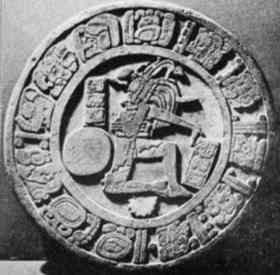The ancient Mayan “ball game” has been estimated to have its origins as far back as 2500 BCE and the oldest court that has been discovered by archaeologists is believed to have been the site of games around 1400 BCE.
 This ancient sporting event may possibly be the oldest known ball game in human history. However, for the Maya it is known that the ball game was more than just an entertaining way of spending time.
This ancient sporting event may possibly be the oldest known ball game in human history. However, for the Maya it is known that the ball game was more than just an entertaining way of spending time.
While many may have played for the game for sport, the more formal games were played out as religious rituals.
The game held deep religious significance. The very first ball game is described within the mythological narratives in the Popol Vuh, the book that has been described as the Mayan Bible.
This book was believed to have been written in the mid 1500s as a translation from older, more ancient Mayan texts by unknown authors.
Unfortunately, the original source has never been discovered.
The Popol Vuh, hidden from the Spaniards for almost two centuries, contains their myth of creation and a dramatic story of twin brothers that provides an understanding of the deeper significance of the ball game for the Maya.
The original ball game
The mythological exploits of twin brothers known as the “Hero Twins” are contained in the Popol Vuh.
However, the ancient tale originates with the twins' father, Hun Hunahpu, and their uncle, Vucub Hunahpu who were believed to be Maize gods.
These two were playing a ball game near the underworld, or what the Maya referred to as Xibalba (roughly translated as “place of fear, or fright”).
This was the realm of the dead, where most Maya ended up after they died.
Xibalba was ruled by the Mayan Death Gods and their minions, and the lords of the underworld were annoyed by the noise of the ballgame. (They would definitely be upset by the cacophony surrounding the World Cup).
To resolve their irritation, the lords of Xibalba lured the two brothers to play ball in the underworld.
There they tortured and killed them, and buried their bodies under the ball court.
The decapitated head of Hun Hunahpu was hung from a fruit tree in the underworld. However, this horrible ending was only the beginning.
Like similar ancient tales, children avenge their fathers' deaths; but, a deeper significance is woven into this Mayan mythology centering around the essence of life and the struggle against death.
Author: Dennis Jamison | Source: Examiner [June 30, 2010]





